Google Shopping isn’t easy, and if you don’t have direct control over your product feeds it can be even harder. Even when you’ve set up your product feed following all of the best practices, there can still be reasons to jump in and make a quick adjustment. Luckily, Google Merchant Center has a feature that allows you to update your feeds on the fly: the supplemental feed.
How to use supplemental feeds in Google shopping
Supplemental feeds are the perfect way to quickly append select items with additional information without having to update your entire feed. Some great examples of how this can be used include:
- Incorporating sale prices into select products
- Adding custom labels for segmenting in Google Shopping
- Correcting GTIN errors while waiting for your feed to be updated
And so many more! For the sake of this walkthrough, we’ll stick to the 3 above.
Let’s start with a scenario:
Bill’s company has a product feed of 5,000 unique video games. On Sunday, they are putting three games on sale at three different discount levels. What’s the best solution?
You guessed it - Create a supplemental feed with sale prices!
Follow these steps:
- Log into your Merchant Center account.
- Click Products > Feeds > Add a Supplemental Feed

- Insert a name for your feed. For this section, I typically choose Google Sheets because it’s the fastest to edit and upload. If you prefer to upload a .csv, however, you can do that via scheduled fetch or direct upload.
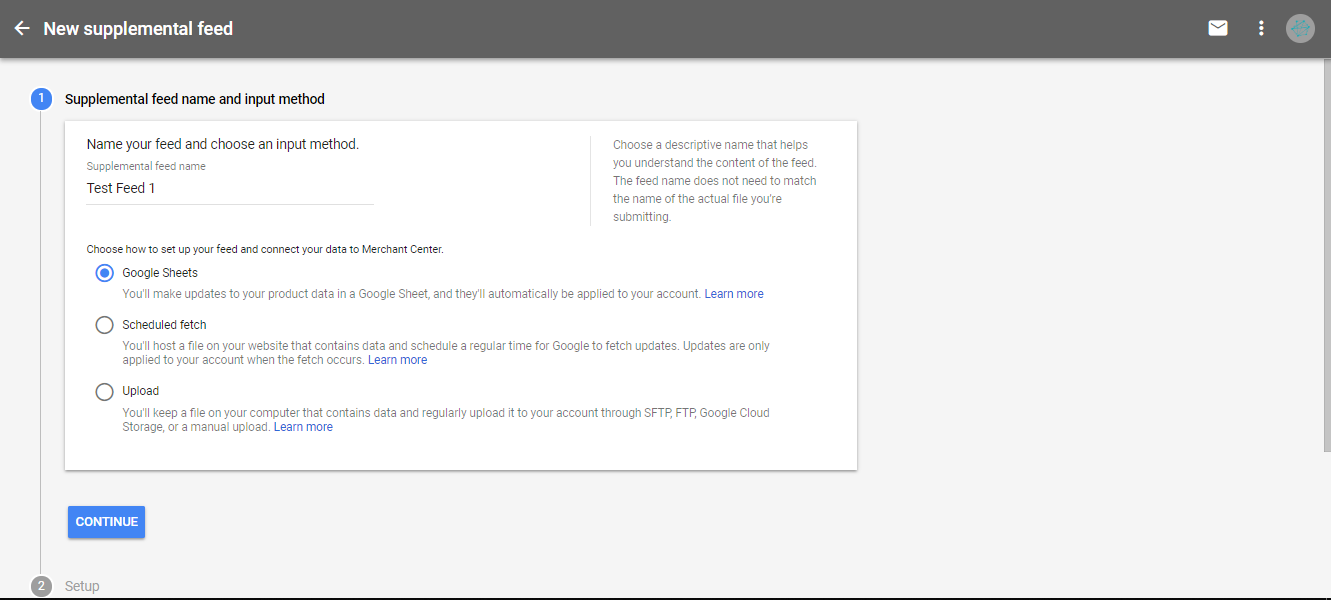
- Click Continue
- The next section will vary based on your selection from part one. If you choose to upload a .csv, section two will be where you name and upload the file. Let’s presume you are creating a brand new supplemental feed in Google Sheets. In section two, you will need to generate your new Google sheet and set a schedule for upload.
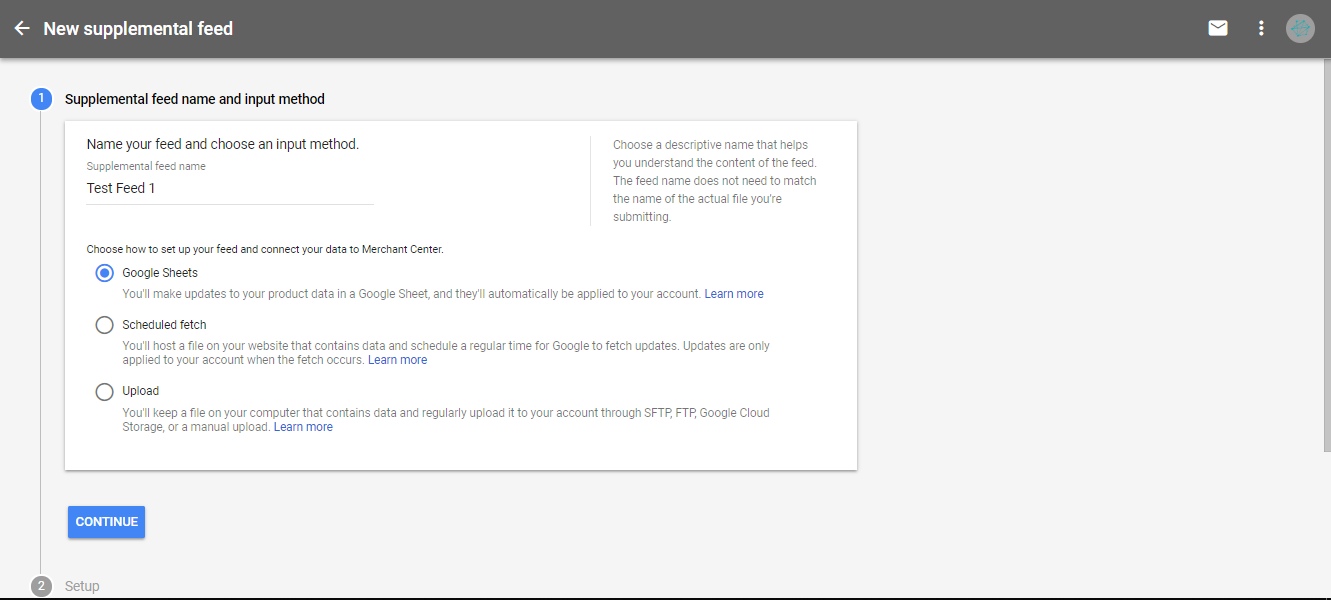
- Lastly, select the feed where you want to add your supplemental feed.

Once you return to the main feed view, be sure to navigate to your new supplemental feed so you can start making adjustments. Scroll down to the supplemental feed section and click “Open” next to your new feed name.

Type in the headers for “id” and the feed attributes you are trying to change. In this case, they’ll be sale price and sale price effective date. To understand formatting for sale price effective date, see this article from Google. It’s crucial to get the formatting correct on sale price effective date...otherwise, you may be at risk of launching a sale early.
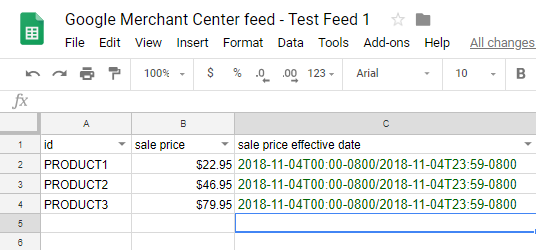
Lucky for Bill, he was able to set up a supplemental feed to launch his sale prices on Google quickly and easily.
On the other hand...
Andrew, who works at a top-selling apparel company, just got a call from his boss, saying Andrew needs to exclude the entire spring line from Google Shopping campaigns.
“But Boss,” Andrew says, “those products are completely mixed in across all product groups. There is no way to subdivide by...”
“Just get it done!” his boss says.
Well, Andrew is in a quite a predicament. Luckily, his good ol’ friends at Seer have his back. By using a supplemental feed, Andrew can quickly add a custom label for “season,” so he can exclude all spring line products without waiting for the product feed update OR losing valuable ad history on the product IDs.
All he has to do is add the product ID and drop the season into any custom label field from 0 - 4.
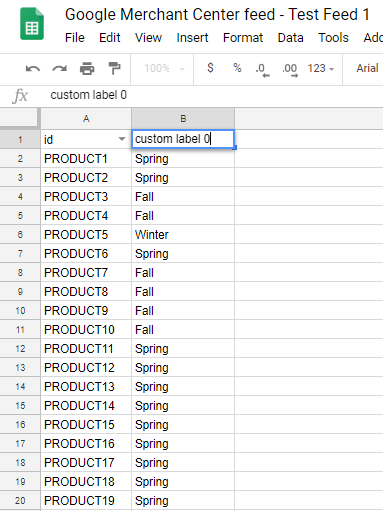
Now, Andrew can segment out Custom Label 0 for Spring and exclude it across his Google Shopping campaigns. Way to go Andy!
How supplemental feeds can help with low sales volume
Diane, unfortunately, is facing a big product feed problem of her own. She noticed that her top products had unusually low sales volume. She jumped into Merchant Center and noticed that she had a lot of disapprovals popping up for “incorrect GTIN”. Looks like there were some typos in the GTIN column with the last feed upload and the feed manager won’t be back until next week. Diane needs a solution, now.
The supplemental feed is the final point of reference for Google before pushing a product to Google Shopping, so making a change here will solve Diane’s problem! All she needs to do is match the item IDs for her top sellers with their GTINs in her supplemental feed and she’s good to go!
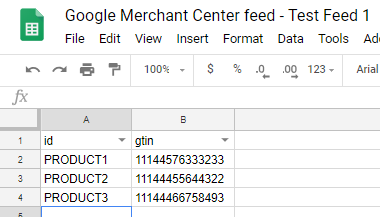
💡 Pro Tip: If you can’t wait for your next feed update, just navigate to the FETCH NOW button and click away for an ad hoc fetch! .

There are tons of other applications for supplemental feeds. Using the skills from these walkthroughs, you can start adding to your feeds as needed. So, no more excuses: it’s time to launch that supplemental feed so you can optimize your Shopping campaigns today!
For more tips on how to get the most from your Google Shopping Ads, sign up for our newsletter!



